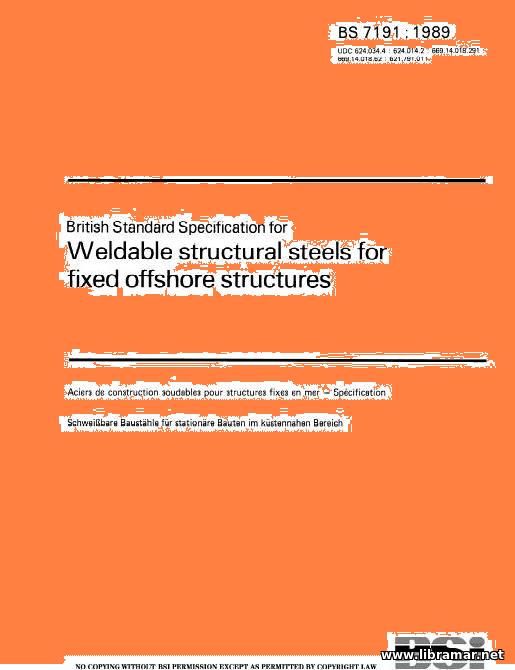 This standard was prepared under the direction and guidance provided by the Iron and Steel Standards Policy Committee and specifies weldable structural steels for use in construction and in maintenance work tor offshore structures. The standard is adapted from BS 4360. It has been drafted as a procurement specification with the sole intention to be used by te buyers and actually anyone who acts on his behalf to procure materials for offshore structures designed to operate in the European Sector.
It specifies a more limited range of steel forms and grades than BS 4360 and provides for enhanced properties in some steel grades in order to reflect the needs of the European offshore industry. It also incorporates a number of options which the purchaser may invoke to meet demanding requirements in particular applications. The editorial style and format of BS 4360 has been utilized.
The new grade designations given in appendix H of BS4360 : 1986, and which will be adopted in the next full revision of that standard have been used but with an amended form of sub-grade suffix. The requirements of this standard apply to the offshore structures that have been specifically designed and built for operation in the European sector in general and North Sea, in particular.
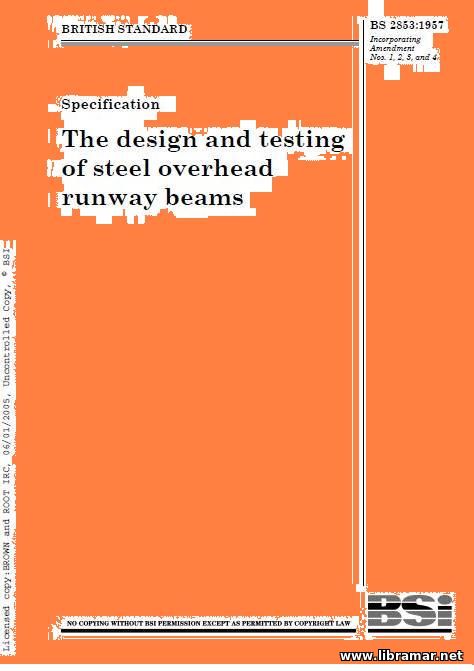 This standard provides necessary requirements to runway beams constructed using the rolled steel sections. Suitability of some other materials might be considered, but the designed must note the particular mechanical properties of the materials proposed for use.
It shall be underlined that the main obligation of the tester is to get the actual runway tested as necessary; under no circumstances shall he himself that the structures and associated supports seem suitable for all loads they will be take. Sometimes, cases this may not be practicable; it will then be the responsibility of the purchaser, in consultation with the competent person, to satisfy the tester that the structure is suitable. The runway beams, i.e. constructions on which trolleys move, shall be of suitable size and adequate stress - they shall also have an even running surface.
The beams shall be adequately supported/suspended and, of course, they shall be capable of being duly maintained. When calculating stresses in the beams, the lifted load shall be taken into account as necessary, along with the weight of the beam and of the lifting appliance, force on the hand chain, and any other loads that are superimposed...
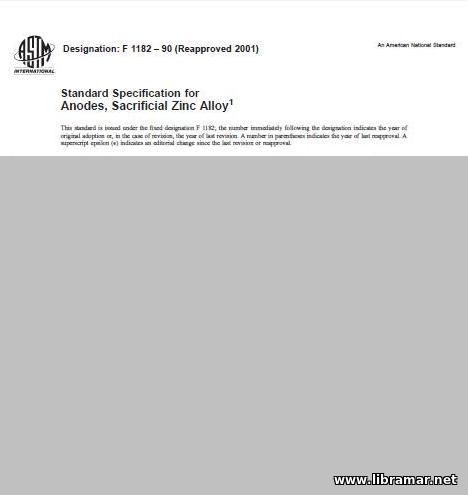 The present standard specification ASTM F1145-92 was released to cover all requirements applicable to zinc anodes in the various forms, used for corrosion (cathodic) protection of metals and metal alloys. Such anodes are used to protect surface ships as well as underwater vehicles, various structures made of steel and alloys, inner side of sea chests of the ships and offshore installations, heat exchangers and condensers (the seawater side has to be protected as necessary).
Among the matters addressed within this publication, there are the general scope of the document, referenced regulatory papers, classification of the products, ordering information, materials the anodes are made of and manufacture process, chemical composition and mechanical properties of the materials, other applicable requirements, dimensions, mass, and permissible variations of the manufactured anodes, workmanship, finishing and appearance, sampling and specimen preparation, test methods and inspection, certification principles, product marking and packaging, keywords - as you can see, the paper contains all required information to make proper choice and order the anodes for the protection of the ship's hull from corrosion in the seawater.
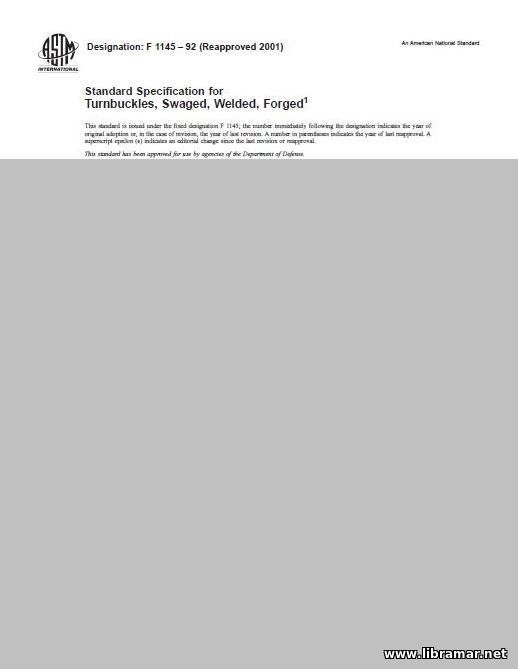 As it can be understood from the title of this standard specification, ASTM F1145-92 is dedicated to the turnbuckles. These devices are the loops or sleeves that have been threaded internally to easy assembling with a threaded eyes, hooks, or jaws at each of the ends - they are used where there is a necessity to apply some tension to the wire ropes, rods etc.
The document is full of technical details and useful information. Even if you do not intend to use it as the regulatory document, the info provided in the publication will definitely let you better understand the construction of these items, materials they are usually fabricated from, applicable requirements, dimensions of the manufactured products and tolerances that have to be taken into consideration when checking the items, tests that are required in order to ascertain the quality and fitness for use of such equipment etc.
A truly invaluable reference source for any person involved in ordering of the turnbuckles, as well as for crew members and even students, taking into account the amount of the technical information presented. The readers who spend some of their time with this paper will get much better idea of the equipment pieces it is dealing with.
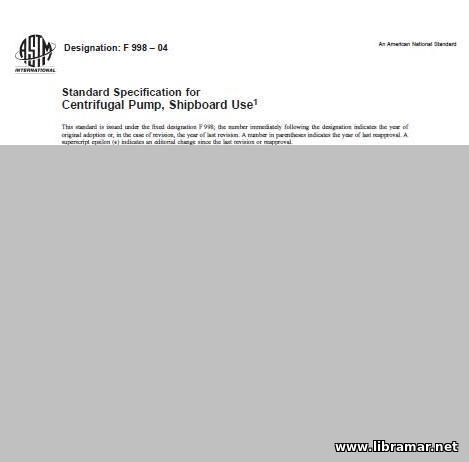 This is the official ASTM standard specification no. F998-04 dealing with the centrifugal pumps to be used on board ships/offshore structures. It covers all requirements that would normally apply to their design as well as construction, and addresses three classes of service, namely freshwater, seawater ad hydrocarbon pumps. In the latter case, the pumps less than 1500 are covered.
The arrangement of the document is pretty regular for the ASTM standard specifications - it covers all aspects including the nomenclature and terminology, ordering info, materials to be used for manufacturing, general requirements that would apply, design matters, performance requirements, painting, coating, equipment identification plates, testing methods and applicable requirements (including shock and vibration testing), various technical documentation, packaging, storage and preservation of the manufactured equipment, quality assurance principles, reference technical documents and regulations... The publication addresses all possible aspects relating to the production, testing and certification of the centrifugal pumps, starting from the very design phase.
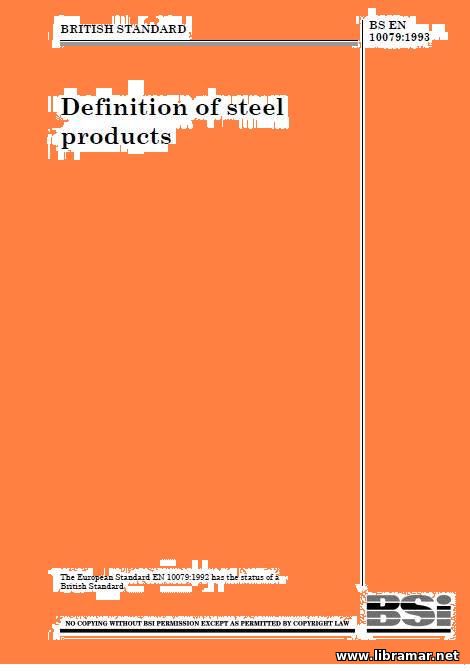 The present British Standard no. BS EN 10079:1993 fully dedicated to the popular definitions that are applicable to the various steel products, and superseding the previous version BS 6562-1:1986. For Normative references refer to the Annex A & B. Steel in the liquid state ready for pouring and obtained from the melting of raw material.
A distinction is made between following: — liquid steel for pouring into ingot moulds or for continuous casting; — liquid steel for castings. Here is the arrangement of this document: scope - normative references - liquid steel - ingots and semi-finished products - flat and long products - other products - steel products and associated standards - references, etc. There is a brief trilingual vocabulary provided - it allows reader to find get the terms translated from English to German and French languages.
There is a number of figures for illustration, such as the illustration of typical profile sheet and of typical sandwich panel, typical sheet piling, typical bearing piling, typical mining frame sections, typical heavy sections etc. Apart from that, numerous links have been provided to some other standards. Highly recommended regulatory paper for everyone wishing to have the idea of the European nomenclature of the steel products.
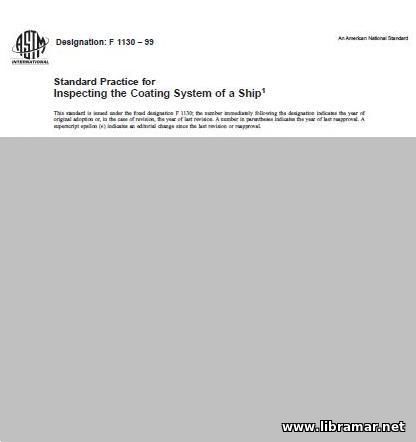 This standard ASTM practice was prepared and released with the ultimate intention to describe the established regular procedures that are to be taken into consideration when conducting the inspections of the coating systems applied to the vessel's hull and superstructure, decks, tanks and voids, various machinery installed on the open decks, and bottom coating.
The authors have also provided a number of standard coating condition reporting forms, and some necessary diagrams supplementing the text data parts, for reporting of the extent of the damage that has occurred to the coating observed during inspection. However, please bear in mind that the procedures mentioned above should only be used by the experienced marine coating inspectors. In addition, this paper contains requirements for the coating inspectors, referenced standards, procedures to be used, form instructions etc.
Apart from all that, significant part of this regulatory publication has been dedicated to the corrosion and its classification, fouling of the underwater hull/boottop, as well as examination of corrosion and coating condition assessment, acceptability, measured properties, and recommendations - more or less everything the inspector has be familiar with to be able to assess the actual condition of the coating correctly.
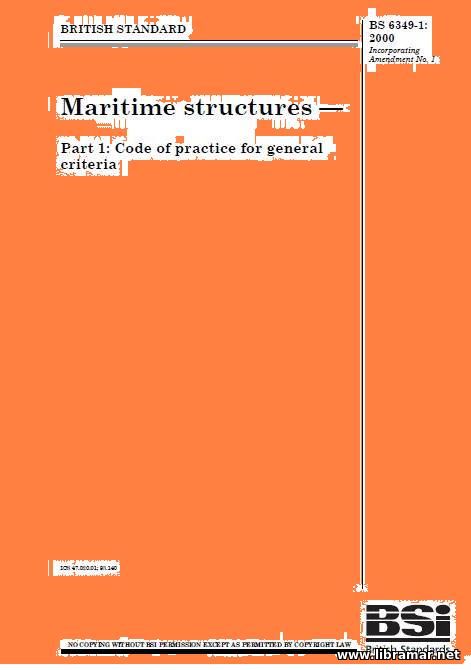 This technical code was prepared to address the conditions pertaining to the UK and; note that local conditions may also necessitate some modifications. The reference is actually made to BS not ES due to the most relevant European Standards being in the pre-standard form. The user shall apply some engineering judgement to properly determine if the recommendations of this code shall be followed and, if so, when they shall not.
The present code is intended for use by the industry engineers having some basic knowledge of the subject. This standard consists of the several parts, first one is the code of practice for general criteria, followed by design of quay walls, jetties and dolphins - design of drydocks, locks, shipways, shipbuilding berths, shiplifts, dock and lock gates - code of practice design of fendering, mooring systems, dredging and land reclamation - design of inshore moorings, floating structures, and breakwaters. Note that the offshore structures are not covered by this Code.
Same applied to the structures in inland waters. Additionally, note that this Code does not provide any guidance on the financial criteria though it is understood that proper economic evaluation shall be made for each project associated with the engineering criteria addressed by this Code.
|







